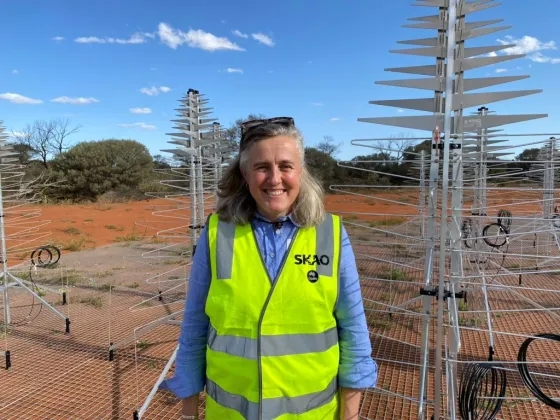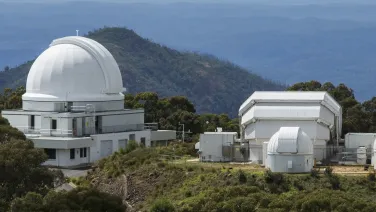National recognition for Australian astronomers innovating how we explore the cosmos
The Astronomical Society of Australia (ASA) honoured six astronomers at its Annual Scientific Meeting in Adelaide this week.
Professor Naomi McClure-Griffiths and Li Yusen from The Australian National University Research School of Astronomy and Astrophysics were among the prize-winners recognised for their remarkable research.
How the Milky Way and its neighbours have evolved

Professor Naomi McClure-Griffiths has won the Astronomical Society of Australia’s Ellery Lectureship for Outstanding Contributions to Astronomy.
Professor McClure-Griffiths is Australia’s pre-eminent expert on atomic hydrogen gas distribution and evolution in our galaxy, the Milky Way, and its neighbours, the Magellanic Clouds.
Her seminal work, based on high-fidelity observational surveys undertaken with Australia’s radio telescope facilities, includes the discovery of a new spiral arm within the Milky Way, the first detection of neutral gas outflowing from the nucleus of the galaxy, and the pioneering demonstration of the importance of magnetic fields in the flow of matter into the Galactic disc.
Naomi is also a co-Principal Investigator on two major observational surveys underway with the Australian SKA Pathfinder (ASKAP): the Galactic ASKAP survey (GASKAP) and the Polarisation Survey of the Universe’s Magnetism (POSSUM)
Our wandering neighbours – the Hercules stream

ANU graduate Li Yusen is the winner of the Astronomical Society of Australia’s Bok Prize for Outstanding Research by an Honours Student or eligible Masters Student.
A group of stars, the Hercules stream, are in our solar neighbourhood but heading on a very different track to our sun, and most stars in the Milky Way.
Li Yusen has confirmed that this stream of stars originated with the ‘bar structure’ at the heart of the Milky Way and are now heading out towards the edges of our galaxy.
His Honours thesis, Orbital dynamics in barred Milky Way: the dynamical and chemical origin of the Hercules stream, led to two original, published papers—an impressive feat for an Honours student.
His research presented a straightforward picture on the orbital level of the origin of the Hercules stream. He used a dynamical approach to confirm the favoured scenario that the Hercules stars are on very large but stable orbits that bring stars out from the inner galaxy to pass through the solar neighbourhood and showed that these stars share chemical properties consistent with this scenario.
The solar neighbourhood comprises more than 8 million stars within 3000 light years of our solar system. About a quarter of those neighbourhood stars are in the Hercules stream.
Read more about the 2025 ASA prizes.



